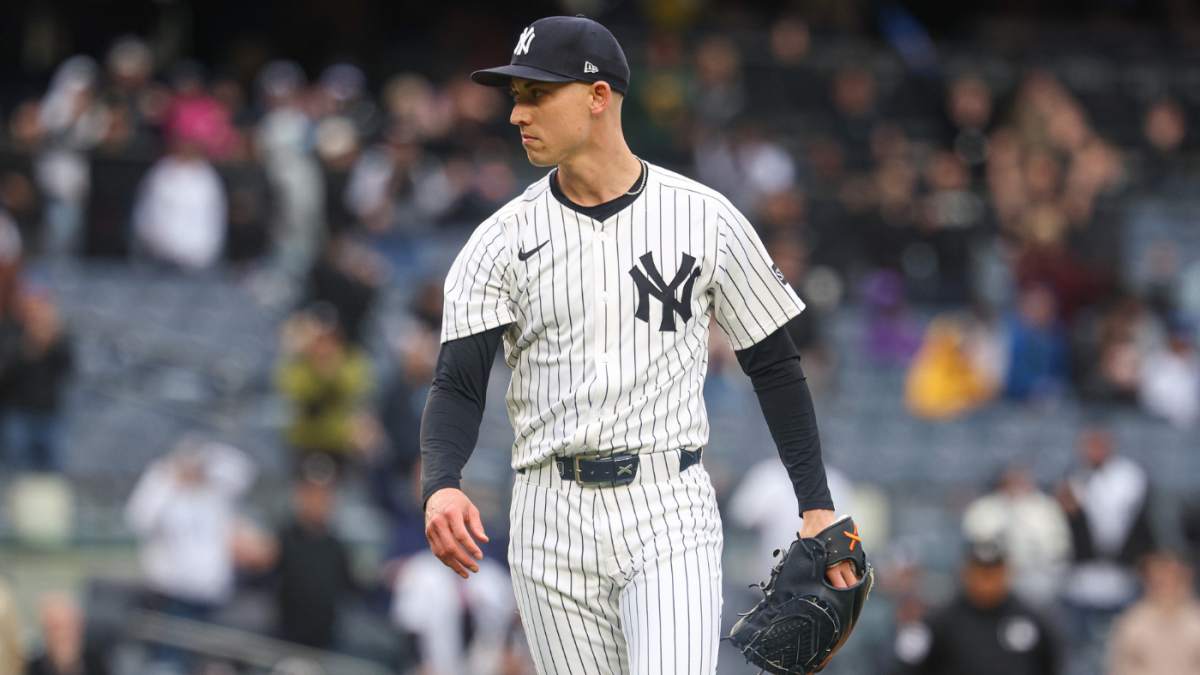The New York Yankees recently faced a significant setback as their key closer, right-handed pitcher Luke Weaver, suffered a hamstring injury that threatens to sideline him for an extended period. This report will thoroughly analyze the situation surrounding Weaver’s injury, its implications for the Yankees’ bullpen and overall team dynamics, and the potential routes forward during his absence.
Luke Weaver’s Injury: Context and Details
Luke Weaver, enjoying a standout season with an exceptional 1.05 ERA, has quickly established himself as a critical asset in the Yankees’ bullpen, particularly in securing games in high-pressure late innings. However, during the warmup for the ninth inning of the Yankees’ recent 7-3 win over the Los Angeles Dodgers, Weaver felt the onset of a hamstring issue severe enough to warrant an MRI. The medical evaluation points to a hamstring strain serious enough to place him on the injured list (IL) for about four to six weeks.
The timing of the injury—arising during bullpen warmups rather than in active gameplay—adds a layer of frustration for both the player and the team, as it is an unfortunate development in an otherwise strong campaign. The official timeline will be refined once the Yankees’ medical staff completes their assessments, but prevailing reports, including those from ESPN’s Jeff Passan and other reputable sources, indicate that Weaver’s recovery will likely span from one month to a month and a half.
Implications for the Yankees’ Bullpen
Weaver’s absence represents a critical blow to the Yankees’ bullpen, which has been instrumental in maintaining the team’s first-place standing and robust 36-22 overall record. As the closer, Weaver’s role transcends routine pitching duties; he is tasked with maintaining composure in the final innings, managing pressure situations, and converting leads into wins.
His 1.05 ERA and consistent performances imply reliability that the Yankees will sorely miss during this period. Losing such a dependable closer opens questions about how the Yankees will recalibrate their late-game pitching strategy. The bullpen must adapt quickly to fill the vacuum created by his injury to avoid a negative domino effect that could jeopardize their strong position in the American League East.
Potential Candidates and Strategic Adjustments
The Yankees’ management faces the pivotal choice of identifying a temporary closer or rearranging bullpen roles to compensate for Weaver’s absence. Devin Williams has emerged as a leading candidate to assume closing responsibilities, having previously held the position before manager Aaron Boone made adjustments.
Williams’ reentry into the closer role could signify a return to a familiar configuration, yet the Yankees will need to balance the pressure placed on him with the broader bullpen workload. Additionally, the team has other bullpen arms like Mark Leiter Jr. and Tim Hill, who could be called upon to bridge innings or handle high-leverage situations depending on the evolving bullpen strategy.
This period demands enhanced flexibility and depth from the Yankees’ relief pitchers. The coaching staff’s ability to manage workloads, maintain pitcher health, and adjust roles will be crucial to sustain competitive momentum while Weaver recovers.
Broader Team Impact
Beyond immediate bullpen logistics, Weaver’s injury could ripple through the Yankees’ overall season outlook. The team, which holds a comfortable lead in their division, will now confront increased uncertainty in closing out games—a task pivotal in tight contests.
Furthermore, the injury underscores the ever-present risk of losing key performers to health setbacks, which can disrupt team chemistry and on-field strategy. It also places greater importance on the Yankees’ player development and acquisition efforts to ensure bullpen depth remains robust throughout the grind of a demanding MLB season.
Path to Recovery and Prognosis
Hamstring injuries, particularly strains, typically require a careful and gradual rehabilitation that balances healing with regaining strength and flexibility. The four-to-six-week recovery window reflects a moderate strain that does not currently project as career-threatening but nonetheless necessitates caution.
Early and effective rehabilitation protocols can help Weaver return to peak form without risking re-injury. The Yankees’ medical team will likely implement a mix of rest, physiotherapy, and progressive throwing programs. Additionally, Weaver’s own conditioning and injury history will factor into the recovery trajectory.
While the team will miss his presence on the field, there remains optimism for his eventual return at full strength to bolster the Yankees’ closing corps during the critical latter stages of the season.
Conclusion: Navigating the Challenge Ahead
Luke Weaver’s hamstring injury constitutes a tough challenge for the New York Yankees, stripping them temporarily of a dominant closer whose performances have been key to their success. Missing four to six weeks during a pivotal portion of the season demands immediate tactical adjustments from the Yankees’ coaching staff and players alike.
Leveraging internal bullpen talent, particularly Devin Williams’s potential resurgence as closer, will be central to maintaining late-inning stability. The situation also highlights the value of depth and adaptability in a roster confronted by inevitable injuries.
As Weaver embarks on his road to recovery, the Yankees must embrace a strategic mindset that optimizes available resources to preserve their divisional lead and playoff aspirations. Though the setback stings, it also showcases the resilience and depth needed to weather the uncertainties of a long baseball campaign. With thoughtful management and a bit of luck on the injury front, the Yankees stand poised to navigate this adversity and remain contenders as Weaver aims for a strong comeback.





